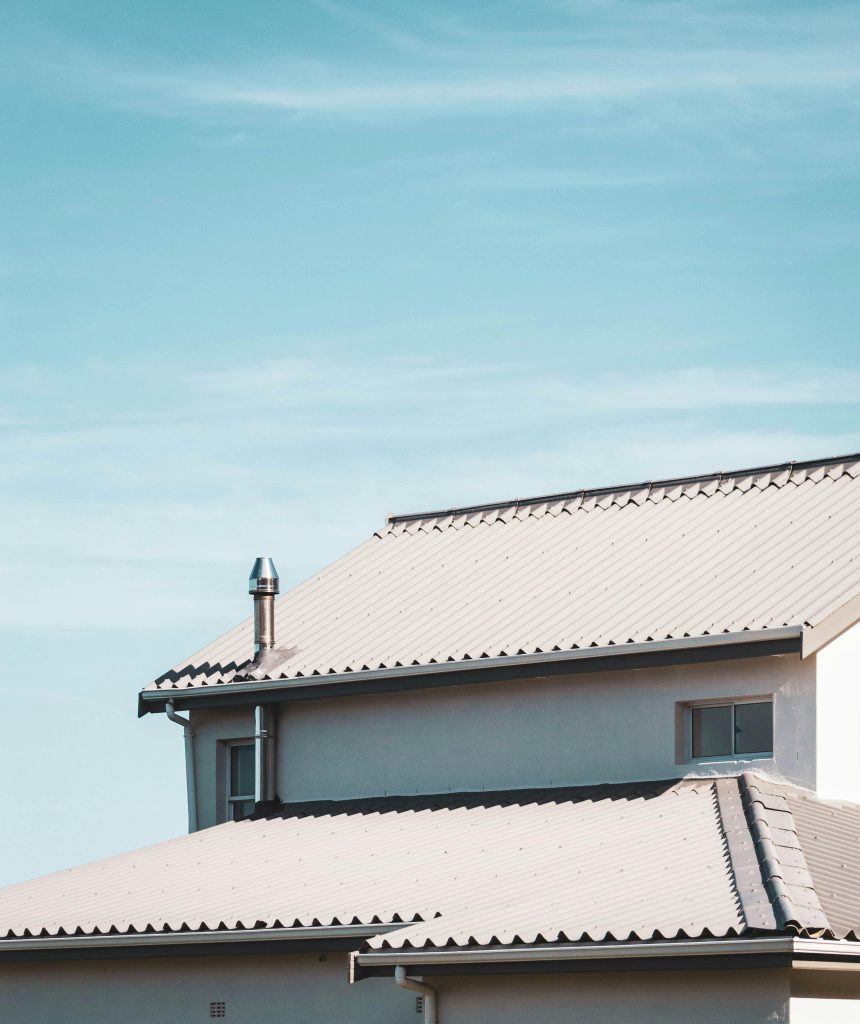Imagine standing on the cusp of a new year, where the possibilities for transforming your home’s roof seem endless. Just as smartphones evolved from bulky gadgets to sleek devices, roofing has undergone a dramatic transformation. Gone are the days when a roof was simply a protective cover; today, it’s a vital element intertwined with design, sustainability, and technology. As we look ahead to 2025, roofing innovations, materials and trends are poised to redefine how we think about this crucial part of our homes.
If you’ve ever wondered what the future holds for roofing, you’re in the right place. This article will explore the cutting-edge roofing innovations, materials and trends for 2025 that are set to enhance durability, energy efficiency, and aesthetics like never before. From solar-integrated shingles to eco-friendly composites, we’ll delve into the technologies and designs that promise to make roofs smarter, greener, and more resilient.
By the end of this read, you’ll not only understand the standout roofing innovations, materials and trends for 2025 but also gain insights on how to select the best options for your next roofing project. Whether you’re a homeowner, contractor or simply passionate about sustainable building, the future roofs we uncover here will inspire you to look up with new appreciation and anticipation.
Join us as we lift the curtain on the exciting roofing innovations, materials and trends that will dominate in 2025 and beyond, reshaping the skyline one shingle at a time.
Table of Contents
ToggleKey Takeaways
- 2025 focus: Roofing moves beyond protection to design, sustainability, and tech integration.
- Solar-integrated shingles and PV tiles generate power without sacrificing curb appeal.
- Cool roofs (reflective coatings/light colors) cut heat gain and lower AC costs.
- Sustainable materials (recycled metal, rubberized asphalt, composites) reduce environmental impact.
- Smart roofs add sensors to monitor moisture, temperature, and structural health for proactive maintenance.
- Climate resilience: Impact-resistant and flexible composites better withstand hail, UV, and severe weather.
- Real savings: Longer lifespans and energy efficiency lower total ownership cost; some projects see big bill reductions.
- Design trends: Sleek profiles, integrated gutters, and minimalist lines blend performance with modern aesthetics.
- How to adopt: Research options, assess climate/architecture/budget, consult pros experienced in new tech.
- Implementation: Plan installs in dry seasons, follow manufacturer specs, and schedule regular inspections/cleaning.
- Regulatory angle: Check codes, permits, and incentives—especially for solar and cool roof upgrades.
- Best fit mindset: Match innovations to your goals—energy savings, durability, or visual upgrade—to future-proof the home.
Why Roofing Innovations, Materials, and Trends for 2025 Are More Important Than You Think
As we approach 2025, the roofing industry is undergoing a remarkable transformation driven by groundbreaking innovations, advanced materials, and evolving trends. But why exactly are roofing innovations, materials, and trends for 2025 so crucial, not just for builders and homeowners, but for society as a whole? To understand this, we need to dive deep into what roofing advancements mean today and how they will reshape our buildings and communities tomorrow.
What Are Roofing Innovations, Materials, and Trends for 2025?
Roofing innovations encompass new technologies, environmentally-friendly materials, and cutting-edge designs aimed at improving the functionality, durability, and sustainability of roofs. These include solar-integrated shingles, lightweight composites, cool roofing materials that reduce heat absorption, and smart roofing systems that can monitor structural health or energy efficiency in real time.
Materials used in roofing have evolved from traditional asphalt and wood to high-performance polymers, recycled components, and photovoltaic panels that convert sunlight into electricity. Trends in 2025 reflect a shift towards sustainable construction, with increased use of renewable resources and designs that prioritize energy savings and climate resilience.
Why Does This Matter So Much in 2025?
According to industry research, the global roofing market is expected to reach over $145 billion by 2025, growing annually at a rate of 5% , highlighting the sector’s rapid expansion. This growth is driven by urbanization, extreme weather events, and the urgent need for energy-efficient building solutions.
Roofing innovations and new materials are central to mitigating climate change impacts. For example, traditional dark roofing materials can increase urban heat island effects, leading to higher cooling costs and environmental stress. In contrast, cool roofs and reflective materials can reduce indoor temperatures by up to 10 degrees Fahrenheit, significantly cutting energy consumption.
On a personal level, investing in innovative roofing can reduce long-term maintenance costs. Advanced materials typically last longer, resist damage from hail or UV rays better, and often come with warranties extending 30 years or more. This translates to financial savings and enhanced peace of mind for homeowners.
A Real-World Story of Success
Take the city of Austin, Texas, which piloted a project integrating solar roofing materials into affordable housing developments. By 2023, homes equipped with these solar roofing innovations saw a 40% reduction in electricity bills on average. Moreover, these roofs improved comfort levels during scorching summers without the need for extensive air conditioning.
One resident, Maria Thompson, shared how the new roofing system transformed her household expenses. “Before, my energy bills were a constant stress, especially in the summer. Since our new roof installation, we’ve saved hundreds of dollars, and the house stays cooler naturally. It feels like a smart investment that benefits us every day.”
Stories like Maria’s highlight the tangible benefits of roofing innovations, materials, and trends expected to dominate the market in 2025.
Conclusion
Roofing innovations, materials, and trends for 2025 are not just industry buzzwords. They represent essential advancements that promise to make buildings more sustainable, resilient, and cost-effective. Whether you are a homeowner, builder, or policymaker, understanding these developments is critical to making informed decisions that align with environmental goals and economic efficiency.
In the sections that follow, we will explore the standout materials and trends shaping the roofing landscape in 2025 and how you can leverage them to future-proof your property.
How to Apply Roofing Innovations, Materials, and Trends for 2025 Step by Step
Embracing roofing innovations, materials, and trends for 2025 can transform your home’s protection, energy efficiency, and aesthetic appeal. However, adopting new roofing technology or designs requires a strategic approach to ensure you make the most informed decisions. Here’s a detailed step-by-step guide to applying these cutting-edge roofing concepts effectively.
Step 1: Research Latest Roofing Innovations and Materials
Before you dive into any roofing project, it’s crucial to familiarize yourself with the roofing innovations, materials, and trends for 2025. This includes understanding the benefits of new materials, such as solar-integrated shingles, cool roofing technologies, and sustainable composites.
– Solar Roof Shingles: These combine solar power generation with traditional roofing, offering energy efficiency.
– Cool Roofing Materials: Designed to reflect more sunlight, they reduce heat absorption, lowering cooling costs.
– Sustainable and Recycled Materials: Such as rubberized asphalt or metal roofing made from recycled content.
Tip: Explore online resources, manufacturer websites, and roofing expos to stay updated on the latest trends.
Step 2: Assess Your Current Roofing Needs and Constraints
Not every roofing innovation will suit every home. Analyze your home’s architectural style, regional climate, budget constraints, and local building codes.
– Home Architecture & Design: Some modern roofing materials may better complement specific home styles.
– Climate Considerations: For instance, cool roofing is vital in hotter climates, whereas insulation-enhanced materials help in colder areas.
– Budget: Innovations may come at a premium; balancing cost with benefits is key.
– Local Regulations: Some trends like solar shingles may require permits.
Step 3: Consult with Roofing Professionals Specializing in 2025 Trends
Engage with roofing contractors or consultants who have experience implementing the roofing innovations, materials, and trends for 2025. Their expert advice can save you time and avoid costly errors.
– Request portfolios or case studies showcasing innovative roofing projects.
– Ask about warranties and maintenance requirements for new materials.
– Verify contractors’ certifications related to new roofing technologies.
Step 4: Choose the Ideal Roofing Material and Innovation
Based on your research and professional consultations, select roofing materials that align with your goals.
For example:
– If energy efficiency is a priority, solar-integrated roofing might be your best choice.
– For budget-conscious homeowners, recycled asphalt shingles provide durability at a lower cost.
– For enhancing curb appeal, metal roofing with modern finishes can be eye-catching and durable.
Step 5: Plan the Installation Process with Clear Milestones
Creating a detailed plan ensures smooth implementation:
1. Procure Materials: Order your chosen roofing products in advance to avoid delays.
2. Schedule Installation: Preferably during dry seasons to prevent weather-related interruptions.
3. Site Preparation: Ensure safety measures and clear the roofing area.
4. Installation: Follow manufacturer instructions and best practices for innovative materials.
5. Inspection & Quality Check: Confirm that installation meets quality standards.
Step 6: Maintain and Monitor Your New Roofing System
After installation, maintaining your roofing innovation enhances longevity.
– Schedule regular inspections, particularly for solar roofing systems.
– Clean roofing surfaces to preserve reflectivity on cool roofs.
– Monitor for wear and tear, especially with newer materials still being tested in real-world conditions.
By carefully following these steps to apply roofing innovations, materials, and trends for 2025, homeowners can not only elevate their home’s style but also invest in durability, energy savings, and sustainability that stand the test of time. Remember, the key lies in informed decisions combined with expert guidance to harness the best that modern roofing technology offers.
Tips for Embracing Roofing Innovations, Materials, and Trends for 2025:
✅ Prioritize Sustainable Materials: Opt for eco-friendly roofing options like recycled metal or solar shingles to reduce environmental impact and lower energy costs.
✅ Explore Cool Roof Technologies: Choose reflective coatings or light-colored roofing materials that help deflect sunlight, keeping buildings cooler and cutting AC expenses.
✅ Consider Green Roofs: Integrate vegetation on rooftops to improve insulation, absorb rainwater, and enhance urban biodiversity.
✅ Embrace Smart Roofing Systems: Invest in roofs embedded with sensors that monitor temperature, moisture, and structural integrity for proactive maintenance.
✅ Opt for Durable Composites: Materials such as synthetic slate or polymer roofing offer long-lasting performance with less maintenance, resisting weather extremes.
✅ Leverage Energy-Generating Roofs: Incorporate photovoltaic panels or solar tiles seamlessly into roofing to generate electricity and maximize energy efficiency.
✅ Follow Design Trends: Sleek, minimalistic roofing with clean lines and integrated gutters enhances modern home aesthetics and functionality.
✅ Plan for Climate Resilience: Choose roofing materials designed to withstand severe weather events anticipated in 2025, such as impact-resistant shingles for hail zones.
✅ Stay Updated on Regulations: Keep informed about building codes and incentives related to roofing innovations to ensure compliance and access benefits.
By applying these tips, homeowners and industry professionals can confidently navigate the evolving roofing landscape in 2025, balancing innovation, sustainability, and style.
Key Concepts
When exploring roofing innovations, materials, and trends for 2025, it’s essential to understand the foundational concepts that drive change and shape the future of roofing technology and design. At its core, roofing is more than just a protective layer over a building; it is a dynamic system that balances environmental demands, aesthetic aspirations, and structural integrity. Imagine the roof as the skin of a living organism , it must be resilient, breathable, and adaptive to ever-changing conditions. The emerging innovations of 2025 embody this metaphor, blending smart technology, sustainability, and cutting-edge materials.

The Evolution of Roofing Materials: From Tradition to Tomorrow
The trajectory of roofing materials is akin to the transition from handwritten letters to instant digital communication , moving from basic functional needs to sophisticated solutions blending efficiency and intelligence. Traditional roofing materials such as asphalt shingles and clay tiles have dominated for decades due to their cost-effectiveness and reliability. However, the narrative in 2025 introduces revolutionary materials that challenge the status quo by integrating enhanced durability, environmental compatibility, and multifunctionality.
For instance, think of nanotechnology-enhanced roofing membranes as a kind of ‘invisible armor’ for your home. These advanced materials incorporate nanoparticles that can repair micro-cracks autonomously, much like a self-healing fabric, thereby extending the roof’s lifespan and reducing maintenance cycles. This level of innovation reflects a paradigm shift where materials aren’t just passive components but active participants in roofing longevity.
Sustainability as the Cornerstone of Innovation
Sustainability has transcended being a mere buzzword and now serves as the foundational principle guiding new roofing developments. The concept of a ‘green roof’ resembles a miniature ecosystem perched atop a building, contributing not only to thermal insulation but also to biodiversity and urban air quality. This idea roots itself in nature’s own strategy: plants regulating temperature and filtering water.
Emerging materials in 2025 emphasize recyclability and energy efficiency. Cool roofing technology, for example, works much like wearing a white shirt on a sunny day to reflect sunlight, reducing heat absorption. These roofs significantly decrease the urban heat island effect, an environmental challenge akin to a localized climate phenomenon where cities become islands of elevated temperatures. Roofing innovations that align with this ecological metaphor help cities breathe better by mitigating such excessive heat.
Integration of Smart Technology: Roofing Meets Intelligence
The roofing of 2025 ventures into a collaboration between construction and digital intelligence , an alliance reminiscent of a symphony where different instruments harmonize to create a masterpiece. This integration is manifest in smart roofing systems embedded with sensors capable of monitoring temperature, moisture levels, and structural health in real time. They act like the senses of a living organism that signal distress before damage occurs, allowing for predictive maintenance.
Imagine a roof that communicates with its surroundings, adjusting thermal properties according to weather changes or alerting homeowners to potential leaks before they escalate. This concept turns roofs into interactive shields rather than static barriers, fostering an era where roofing materials do more than just protect, they ‘think’.
Aesthetic Trends Reflecting Function and Form
Roofing innovations in 2025 not only pursue functionality but also redefine aesthetics. The roof is no longer just a capstone but a canvas for architectural expression. Modern trends embrace versatility, where roofs incorporate solar tiles resembling traditional slate or shingles, effectively blending energy generation with visual appeal.
Think of the roof as a chameleon, adapting its look to the style of the building while serving contemporary purposes. The increasing use of customizable and modular roofing components allows for greater creativity without sacrificing performance. This trend underscores a holistic approach, where innovation respects and enhances the cultural and visual context , merging beauty with brains.
Durability and Resilience: Preparing for Future Challenges
In the narrative of roofing for 2025, resilience is a recurring theme, much like a seasoned athlete preparing for unpredictable conditions. Climate change has imposed new threats, intense storms, extreme temperature fluctuations, and increased UV exposure challenge roofs to endure more than ever before. Consequently, durability now involves materials and designs that can flexibly respond to these environmental stressors.
Emerging roofing solutions incorporate flexible composites and impact-resistant surfaces that withstand hail or debris, analogous to how a knight’s armor adapts to different attacks. This resilience not only protects the physical structure beneath but also minimizes resource consumption and waste, contributing to a sustainable lifecycle.
In summary, the key concepts of roofing innovations, materials, and trends for 2025 revolve around a triad of sustainability, technology integration, and resilient aesthetics. As these elements converge, they herald a future where roofs serve as intelligent, sustainable extensions of the buildings they protect, elevating the humble roof from a simple shelter to a multifunctional, eco-conscious marvel. Understanding these concepts equips us to appreciate how the roofing industry is poised for transformation, driven by both environmental necessity and human ingenuity.
Frequently Asked Questions about Roofing Innovations Materials and Trends for 2025
❓ What are the most popular roofing materials expected in 2025?
In 2025, roofing innovations will focus heavily on sustainable materials like recycled metal, solar roof tiles, and enhanced synthetic composites. These options offer durability, energy efficiency, and a reduced environmental footprint, making them increasingly popular choices.
❓ How will roofing trends in 2025 improve energy efficiency?
Roofing trends in 2025 emphasize energy-efficient designs such as cool roofs, reflective coatings, and integrated solar technology. These innovations help reduce heat absorption, lowering cooling costs and minimizing the overall energy consumption of buildings.
❓ Are smart roofing systems becoming mainstream by 2025?
Yes, smart roofing systems equipped with sensors to monitor temperature, moisture, and structural integrity are gaining traction. By 2025, these technologies will become more affordable, providing homeowners with preventive maintenance alerts and enhancing roof longevity.
❓ What role do sustainable roofing materials play in 2025 trends?
Sustainability is a core focus in roofing innovations for 2025. Materials like reclaimed wood, recycled rubber, and bio-based shingles are trending because they reduce waste and carbon emissions during production, aligning with global environmental goals.
❓ Will roofing maintenance change due to new materials and technologies in 2025?
Absolutely. Innovative materials paired with smart technologies will simplify roofing maintenance by offering real-time condition reports and early detection of potential issues. This proactive approach will lower repair costs and extend roof service life.


